An up close and personal interview with U.S. Navy Veteran and Togetherweserved.com Member:
dtae posted: july 2015
http://navy.togetherweserved.com/usn/voices/2015/96/Pomeroy_voices.html
AL1 Charles Pomeroy U.S. Navy (1947-1956)
PLEASE DESCRIBE WHO OR WHAT INFLUENCED YOUR DECISION TO JOIN THE NAVY?
Born in 1930 in Beloit, Wisconsin, as Harold Ames Arnsmeier, I had a Depression-era childhood that ended in a broken home when our parents divorced in 1942. The four siblings in the family were then scattered amongst relatives and the Rockford Children's Home in next-door Illinois. In early 1946 our
|

|
|
SBD Douglas Dauntless (Navy)
|
mother re-married and one brother and I, the remaining siblings in the Children's Home, were rescued by our new step-father, Charles Wesley Pomeroy. A Navy veteran of WWII, he was a good man who commanded respect. He also related many sea stories of the South Pacific and Australia that grabbed my imagination early on and inspired in me a burning desire to see the world as he had done.
But I was also inspired to join the Navy by the image of the radio-gunner in the rear cockpit of an SBD dive bomber, the Douglas Dauntless. Naval aviation became my goal and even as a 17-year-old who had not completed high school I was determined to sign up. First, it was necessary to talk my step-father into legally adopting me so that he could sign the permission papers as required for anyone under age 18. That was done, and under my new name of Charles Ames Pomeroy I joined the U.S. Navy on November 23rd of 1947, the same month I had turned 17. Thus launched, I went on to nine years of learning and adventure in Naval aviation. It was a decision I have never regretted.
WHETHER YOU WERE IN THE SERVICE FOR SEVERAL YEARS OR AS A CAREER, PLEASE DESCRIBE THE DIRECTION OR PATH YOU TOOK. WHAT WAS YOUR REASON FOR LEAVING?
After boot camp at Great Lakes, I attended Aviation Fundamentals and Aviation Electronics schools at NATTC, Memphis, Tennessee, before being assigned to my first squadron, VP-27, in late 1948. We were flying PB4Y-2s, the Navy version of the B-24, out of Whidbey Island in Washington state and Kodiak, Alaska. When that squadron decommissioned at the end of 1949, then Lt. Cdr. Wiley M. Hunt, our Patrol Plane Commander (PPC), took most of his crew with him into VP-6 and the newer P2V Neptunes. VP-6 later became famous as the "Blue Sharks" after flying missions out of Japan during the Korean War. In 1953 I was transferred into VP-9, again flying in P2Vs and again returning to Japan in August of that year for my third deployment there. By that time my rating had advanced to AL1. A few months into VP-9's Japan deployment, however, a set of orders assigning me to Naval Attache duty cut short that tour and sent me on my way to Washington, D.C., for preparatory orientation.
|

|
|
I was a radioman aboard this VP-27 PB4Y-2 in Alaska.
|
I was assigned to duty in Rome, Italy, where the Naval Attache had an R4D aircraft, the Navy version of the C-47, and arrived there in early 1954. It was a civilian-clothes assignment, but I had been instructed to take along one set of dress blues in case the need to wear a uniform should arise. (It did on one occasion when we were called on to fly the Commandant of the Marine Corps, Gen. Lemuel C. Shepherd, to Venice.) It was my nearly two years of exposure to a wider world in Rome that moved me to leave the Navy and seek a higher education. After a landing mishap disabled our aircraft at Ciampino airfield in late 1955, a decision was made not to replace it and I was given a choice of agreeing to re-enlist, which would have kept me in the Attache system, or returning to squadron duty. I chose the latter and was transferred to VP-11, another great P2V squadron based in Brunswick, Maine, and concluded my service with one final overseas deployment to Malta. I was honorably discharged in November of 1956.
IF YOU PARTICIPATED IN COMBAT, PEACEKEEPING OR HUMANITARIAN OPERATIONS, PLEASE DESCRIBE THOSE WHICH WERE THE MOST SIGNIFICANT TO YOU AND, IF LIFE-CHANGING, IN WHAT WAY.
As an Aviation Electronicsman (AL), with a Combat Aircrew (CAC) designation, I flew on 79 missions during the Korean War, mostly in the radio or radar positions and occasionally in the dorsal turret with its two .50 caliber machine guns. The early interdict missions in July and August of 1950,
|

|
|
VP-6 radio shack gang, 1951.
|
when we were fighting to hold the Pusan Perimeter, involved direct combat on a number of occasions. I was only 19 then, turning 20 in November, but those months were life-changing in that they gave me a greater sense of confidence and worth as someone doing his bit. Among our more significant missions was an encounter with North Korean PC boats in August of 1950 in which our wingman, BE-5, was hit by anti-aircraft fire, but managed to ditch some ten miles off Korea's west coast south of Chinnampo. Our PPC (Patrol Plane Commander), Lt. Cdr. Wiley M. Hunt fended off the PC boats, which were intent on capturing our downed crew in their yellow rafts, with occasional rocket fire and bursts from the 20 mm nose cannons. A British cruiser, the HMS Kenya, arrived on the scene some two hours later and we headed for Iwakuni, landing there with nearly empty gas tanks. This mission is described in my commentary appended to a Collier's article: http://www.vp-6.org/content.aspx?page_id=22&club_id=309126&module_id=140502. Amazingly, no lives were lost as a result of this shoot-down and ditching.
Another significant, and vivid, memory is of three successive combat encounters on a single night during a recon mission to illuminate, in turn, Chinnampo, the harbor for Pyongyang, and Kunsan on Korea's west coast. Two aircraft from VP-6 were involved, with the CO, Cdr. Art Farwell, flying as our PPC on that mission. Approaching the first target we encountered a night fighter, which we managed to evade through exquisite teamwork by radar operator, navigator, and pilots. Details can be found in this account: http://www.vp-6.org/content.aspx?page_id=22&club_id=309126&module_id=140503. We received anti-aircraft fire over both recon targets, with that at Kunsan being the more accurate (those tracers arcing up off the starboard wingtip are forever etched in my memory). Farwell took evasive action by whipping the plane into a steep turn around a promontory that overlooked the harbor. Even so, flashes from small arms fire from that hillside were clearly visible as we made the turn and dove to a lower altitude to exit the harbor. Briefer exposure to anti-aircraft fire was experienced on several other missions as well, or none at all in one instance when we attacked a coastal bridge. The bridge attack was written up by a war correspondent, Wayne Thomis of the Chicago Tribune, in an article entitled "Two Navy Patrol Bombers Batter Vital Korean Bridge," for which I still have the clipping. But most of our missions were long recons in the Yellow Sea or the Sea of Japan, with the final leg on each being along the Korean coast.
One more memory that sticks has to do with the surreptitious entry into the war in October of 1950 of the Chinese "Volunteer" army and their encirclement of U.N. forces, primarily Marines, in late November that led to the Battle of the
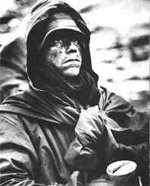
Chosin Reservoir...or the "Frozen Chosin" as we called it. On the return leg of a patrol of the Yellow Sea in early December of 1950, our Crew 7 (with Wiley M. Hunt as PPC) did a low-altitude (very low!) recon during the breakout by the Marines, flying from Korea's west coast across the reservoir to Hungnam. Radar was secured and I was manning the dorsal turret, which did not allow much visibility directly below unless we were making a steep turn. And it was one of those turns that left an indelible memory. A single man crossing the icy surface of the lake popped into view, and Hunt circled trying to determine which side he was on. Apparently he wasn't on ours, since he broke into a run and fell several times on the slippery ice, but there was no way to confirm his identity. Of one thing we were certain: it was damned cold down there and that poor fellow was having a hard time.
The Marines wouldn't have made it, by the way, without the crucial air support supplied by U.N. aircraft, especially the carriers of Task Force 77, and Naval support from Task Force 90 off the east coast. Just how cold it was that winter can be judged from another mission that occurred during the same time-frame when we were descending in the Pyongyang area. Again, with radar secured, I was manning the dorsal turret when with a sharp snap the plexiglass just behind my head on the left side shattered. It left a small, perpendicular hole of a few inches, but there had been no apparent anti-aircraft fire and a stray bullet glancing off the turret was highly unlikely. AO1 Carl Miller, our ordnancemen concluded that it was caused by descending in the extremely cold temperature in North Korea at that time, although similar P2V aircraft had flown in the freezing temperatures of the Arctic Circle. In any event, I kept that piece of plexiglass as a memento for many years, until it was eventually lost. All in all, these experiences were life-changing in not only giving me a greater sense of confidence and worth, but also in giving me a greater appreciation for teamwork and creating lasting friendships. To this day I clearly remember the names and faces of the guys I flew with, my mentors, especially those who did not survive the war. And over 65 years later I am still in touch with a few of the remaining members of that squadron, thanks to email.
OF ALL YOUR DUTY STATIONS OR ASSIGNMENTS, WHICH ONE DO YOU HAVE FONDEST MEMORIES OF AND WHY? WHICH ONE WAS YOUR LEAST FAVORITE?
That is a difficult question. It is a toss-up between NAS Barbers Point on Oahu, Hawaii, where VP-6 was home-based in the early 1950s, and the Naval Attache in Rome, Italy, where I spent two years in the middle of that decade. The first offered all the delights for which
|

|
|
Waikiki Beach in the 1950s.
|
Hawaii is famous, especially after I was able to afford a used 1946 Chevrolet convertible that allowed frequent trips to Waianae and Honolulu. Waikiki beach was still relatively pristine in those days and much favored by celebrities. In fact, on one of my visits there I encountered the then-famous actor Richard Widmark on Kalakaua Avenue in front of the Royal Hawaiian Hotel. But the nearby Moana Hotel was our favorite watering hole. It was there, in the seaside bar, that I was able to order my first-ever gin-and-tonic after attaining the legal age of 20 then recognized by the Territory of Hawaii. That was in February of 1951 after returning from our first round in the Korean War. But more than drinking sessions with squadron mates, it was a group of local kids that I got to know who made my visits to Honolulu truly interesting, especially when they organized beach parties and an occasional "hukilau" to net shoreline fish. They were a good bunch and I learned much from them about local lore and their pidgin slang. And the same was true of Waianae, where snorkeling and body surfing were popular, followed by a drink and local food at Pokai Bay Tavern.
Many fond memories remain. Rome left me with many fond memories. As one of the cradles of civilization, it offered educational, cultural, and social opportunities of a special kind as well as introducing me to classical music and opera. I became a fan. Its architectural monuments were the first to attract my interest, and I bought a Vespa motor scooter partly to make it easy to visit those famous places. This was also the time of "La Dolce Vita" as the sweet life was called in Rome, although most Americans would probably think of it as the "Roman Holiday" era. My Vespa, too, attracted interest from the opposite sex, especially visiting school teachers from the U.S. Rome's many fine restaurants and wine culture made dating there a special event when I got lucky, although more often dinners at Alfredo's were shared with mates from the Attache offices. Living in Rome for me had become an unexpected dream come true. Moreover, as radioman on the Naval Attache plane I was able to visit most of the countries around the Mediterranean that fell within our area of responsibility, including Portugal, Spain, Greece, Turkey, Lebanon, Egypt, and Algeria. Visits to all were enlightening, but the Arab countries in particular were eye-openers. As well, our travels also took us to France, The Netherlands, and Germany. One of the benefits of being a crew member was having plenty of time for sightseeing while our high officials were taking care of seemingly endless official business.
My least favorite was Kodiak, Alaska, famous for bears and salmon. There was a hobby shop, but little to do otherwise unless you were into fishing or hunting. Or skiing during winter months. In a way that was a good thing, for the lack of distractions allowed plenty of time for self-improvement when we were not flying or drinking beer at the EM Club. Flight crews looked forward to the occasional trip to Anchorage or Fairbanks and, yes, even to those long patrols to Adak and beyond. In second place among my least favorites was Malta, that small island in the Mediterranean south of Italy, where I spent three months with VP-11 during my last year in the Navy. The one diversion I enjoyed there was snorkeling and diving for sea urchin in the abandoned submarine pens from WWII. And one boondoggle flight to Rome that allowed me to again meet with earlier friends who remained with the Naval Attache at the U.S. Embassy.
FROM YOUR ENTIRE SERVICE, INCLUDING COMBAT, DESCRIBE THE PERSONAL MEMORIES WHICH HAVE IMPACTED YOU MOST?
Apart from combat operations, memories of squadron mates lost on the second deployment (1951-52) of VP-6 in the Korean War had the strongest impact. First among these is that of P.R. Foster, AD1, who I had first flown with in VP-27 in 1949 and then in VP-6 during our first
|

|
|
Lost members of Crew#12, 1951.
|
K-War deployment. A veteran of WWII, he and a Reservist veteran, AL2 Ralph Wigert, both had been transferred from our crew to Crew #12 only a few months before being shot down on Nov. 6, 1951. Lost with them were AL2 Gus Juric and AT1 "Rags" Ragland of the electronics gang who had been close mates and mentors as well. Once a year I raise a glass to them on November 6th, a date that also happens to be my birthday anniversary.
Earlier memories that had impact date from 1949 during my first year in an aircrew while serving with VP-27. One of the squadron's best pilots, Lt. Cdr. Wiley M. Hunt, who also commanded respect as a survivor of a WWII POW camp in Japan (his PBY had been shot down in 1942), was my first PPC (Patrol Plane Commander). During our deployment to Kodiak that year we were on a return leg from a patrol up to the Diomedes Islands in the Bering Straits when a duck smashed through the center windshield between the pilots. That forced a landing in Nome and a five-day lay-over there waiting for repairs to be completed. With most of the crew having free time, we did some interesting sightseeing that included gold-mining operations and observing the life-style of King Islanders who were making their annual visit. Indeed, an indelible memory. Scarier was a second emergency, again with PPC Hunt at the controls, when on a flight to Anchorage our PB4Y-2 developed heavy icing on the wings that forced an immediate return to Kodiak. A tense half-hour or so followed as we descended over mountainous terrain at ever lower altitudes on our return to base. At what seemed the most critical moment, a crew member while traversing the narrow catwalk through the bomb bays had somehow got his parachute harness hung up and was shouting for help. As junior radioman and lowest man on the totem pole, I got the job of unhooking him. It was, indeed, a nail-biting flight that left a second indelible memory. Then Hunt as our PPC in VP-6 in 1950, and quite aside from our K-War combat encounters, left me with one more vivid memory of his flying skill. On our return from a mission in September of 1950 to Tachikawa Air Force Base, low on fuel and the field socked in. GCA brought us in a bit too high to set down, but Hunt pulled us around the field in a tight turn, popping in and out of the low clouds, to make an exceedingly steep but successful landing. That was exciting enough,
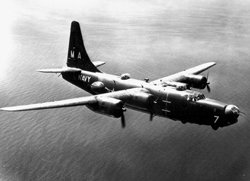
but the memory with the most impact was the sight of people working atop various aircraft scrambling for safety as we flashed overhead in our steep turn only a hundred feet or so above them.
Although only one of our aircraft, BE-5, was shot down during our first deployment, VP-6 lost another aircraft when a malfunctioning engine forced it to make an emergency landing on a small, abandoned airfield in Kyushu. They ran out of runway, resulting in the plane breaking in half but with no serious injuries. The impactful memory is that of AL2 Rudy Ohnersorgen, who survived the crash, returning in his muddy flight suit with the huge aerial camera used on our recon missions slung on his back. His fortitude, and the huge smile that went with it, always had a positive impact. Both Rudy and his older brother, Eddie, served in VP-6 during our first deployment. And then there is the memory of two CPOs from the first VP-6 deployment. We had not lost a single man up to the time we were to return to our home base in Hawaii in February of 1951. Then it happened. Les Humiston, a CPO and one of the few remaining enlisted pilots from WWII who had commanded great respect from all, was flying on a familiarization flight with the squadron that relieved us. Their aircraft flew into a mountaintop not far from Atsugi. The other CPO, J. C. Oberg, remains in my memory as the only one in the squadron to receive a Purple Heart after being wounded by ground fire while manning his plane's tail turret. I have already described the loss of Crew #12, but in addition to those ten men we also lost two more during our second deployment. These were the Executive Officer of the squadron, Cdr. Perkinson, and ALC Hathaway, who died in a ditching during an ASW mission in Korean waters the day after Christmas in 1951. The ditching is described on the VP-6 website: http://www.vp-6.org/content.aspx?page_id=22&club_id=309126&module_id=140504. The memory of that loss on top of the ten men in Crew #12 remains to this day.
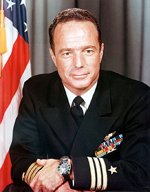
Unforgettable, too, is a lightning strike on our aircraft returning from Adak to Kodiak in late 1952. Lt. John W. St. Marie was our PPC and Lt. Jg. Scott Carpenter was our pilot-navigator. The flash illuminating the interior of the aircraft was so bright that everyone thought we had met our Maker. A later inspection showed that the lightning bolt had burned a series of holes in the fuselage running down from under the six 20mm bow guns toward the radome. Carpenter, who later became famous as an astronaut and later as an aquanaut, describes this on page 123 of his book, "For Spacious Skies." I described this incident as well in my article that appears in VP-6 Org's obit section, "In Remembrance," on their website: http://www.vp-6.org/content.aspx?page_id=22&club_id=309126&module_id=146272.
Among my many memories from Naval Attache duty in Rome, the one with the most impact was of a landing at Ciampino airport in which our port strut collapsed and the wingtip was torn off. Fortunately, our pilot, Marine Corps Lt. Colonel Smith, the Assistant Naval Attache, and co-pilot Hal Haff--a CPO and one of the few enlisted pilots still in service in the mid-1950s--had made an extremely smooth landing that allowed us to walk away from the mishap. But on exiting the aircraft, and with visions of AvGas leaking out of the broken wing, we were astonished to see among the would-be rescuers rushing toward us one man with a burning cigarette in hand. Alert comrades stopped him, but it was another scare and an indelible memory.
WHAT ACHIEVEMENT(S) ARE YOU MOST PROUD OF FROM YOUR MILITARY CAREER? IF YOU RECEIVED ANY MEDALS FOR VALOR OR OTHER SIGNIFICANT AWARDS, PLEASE DESCRIBE HOW THESE WERE EARNED.
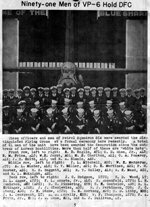
I am, of course, proudest of my Distinguished Flying Cross (DFC) and four Air Medals, all of which were earned during VP-6's first deployment to Japan in 1950-51 to participate in the Korean War. These were not awarded for any specific act of valor, but simply doing my job on whatever mission we were assigned. I flew on 42 missions during our first deployment and 37 on our second, a total of 79. Later, most missions were long, boring patrols of the Sea of Japan and the Yellow Sea, but we had our moments of excitement during the early months of interdicting the North Koreans. That meant a mission about every third day or so. All who participated in those early missions received the DFC, as seen in the attached photo.
OF ALL THE MEDALS, AWARDS, QUALIFICATION BADGES OR DEVICES YOU RECEIVED, PLEASE DESCRIBE THE ONE(S) MOST MEANINGFUL TO YOU AND WHY?
As noted earlier, the Distinguished Flying Cross (DFC) awarded to me and 90 other flight crew members of VP-6 in 1950 was the most meaningful medal simply because it represented our successful efforts during the critical stages of holding the Pusan Perimeter and later support for the Inchon landing. Of the 91 who received the DFC, 10 did not survive the Korean War. As for qualification badges, my Combat Aircrewman (CAC) wings, with its battle stars, and aerial gunnery patch have remained meaningful even today as representing things earned in my youth. In fact, it is always my CAC wings that first catch my eye when I open that small box of memorabilia, perhaps making it the most symbolic of my eight years of flying as a crewman in the U.S. Navy.
WHICH INDIVIDUAL(S) FROM YOUR TIME IN THE MILITARY STAND OUT AS HAVING THE MOST POSITIVE IMPACT ON YOU AND WHY?
The list is long, but there was at least one, and usually several, in each of my assignments who had a positive impact on me. This started as early as boot camp at Great Lakes in 1947, with two guys named Short and (Jim?) Sharpe (have forgotten their first names)
|

|
|
Crew#7 at Kodiak, 1952.
|
who gave much support and encouragement to me as a 17-year old, baby-faced kid who was subjected to occasional bullying. And even though I've forgotten his name as well, one classmate at aviation electronics school at NATTC, Memphis, gave me much-needed encouragement. We had stayed in touch with the occasional letter, and I learned later that he served as a radioman on Berlin Airlift flights in 1949, but we eventually lost contact. Among those having a positive impact on me as a newly minted petty officer in 1949, were my senior crew members ALC Jack Remington and AD1 P.R. Foster during our VP-27 days. Their mentoring continued in VP-6 following the transfer of our crew into that squadron in 1950, especially after we began flying combat missions in the K-War. During those trying times our ordnance man, AO1 C.V. Miller, remains vivid in my memory for his instructions on our weapons systems.
Although assigned to other flight crews, those in the electronics gang with a positive impact were Richard "Dick" Colley who advanced in his AL rating along with me (he later became a mustang and retired as a Lt. Cdr), who was in Crew #5 and survived the shoot-down of their aircraft. As well, AT1 "Rags" Ragland and AL2 Gus Juric, who were lost with Crew #12, had positive impacts on me during that period, as did two brothers, Eddie and Rudy Ohnersorgen, both ALs, who fully shared their expertise and experience. But perhaps it was my PPC on the second deployment, Lt. John Sullivan, who was to have the greatest impact several years later, although I did not know it at the time. He had been the co-pilot of BE-5, our wingman, when that plane was shot down south of Chinnampo in August of 1950 and later became our PPC in 1951. Lt. Sullivan was later assigned to the Aviation Desk at BuPers, where he recommended me for Attache duty, according to Johnny Sigillito, a Chief Personnel man who worked in that section. Johnny had been a buddy of mine in VP-27 before his transfer to Washington and we had stayed in touch even after my discharge.
After my transfer from VP-6 into VP-9, Ray Kirby, an AL1 who later became a mustang and rose in the officer ranks, had the most positive impact. His encouragement was felt even after I had left the Navy and begun studies in Japan, where luckily he had assumed duties as a Lt. Jg. at NAF Atsugi. He and his wife offered much support to me as a student, which I will never forget. Another squadron mate from VP-9, Bill Williams, had impact not only during those years, but encouragement that continues even today through our on-going email communications.
During that crucial transition period of 1954-55 when I was assigned to Naval Attache duty in Rome, not one, but two great guys had positive impact. The first was Hal Haff, our co-pilot who was a CPO (and another of the few remaining enlisted pilots) who helped to expand my horizons. The other was not Navy,
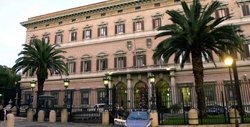
but Air Force, a Master Sergeant by the name of Bill Bond who was in charge of the photo lab in the basement of the Embassy. An unexpected collateral duty assigned to me had been photographer for the Naval Attache, for which I was completely unprepared. Bill Bond came to the rescue and gave me a crash course in photography. (Thanks, Bill, and sorry I dropped that Speed Graphic.) I would be remiss not to mention the guys in the Crypto section, especially Jim Taylor, who introduced me to the fine art of making a good martini. Although I gave up all alcohol during my student years in Japan, except for an occasional beer, I eventually returned to the pre-dinner martini custom after I became a correspondent in the mid-1960s. That is still part of my daily routine, and I still limit it to a single well-made libation.
>From VP-11 days, Cdr. Oliver, the XO and my last PPC, sticks in my mind as being similar to Lt. John W. St. Marie as one who encouraged his men to set their sights higher in life. In fact, his suggestion that I apply for OCS almost persuaded me to stay in the Navy. Carl Beasley, too, who flew with us in Crew #2 as 2nd Mech during the Malta deployment, also had impact as one who encouraged me to continue my study of the Japanese language. He also stayed in contact after my discharge.
CAN YOU RECOUNT A PARTICULAR INCIDENT FROM YOUR SERVICE WHICH MAY OR MAY NOT HAVE BEEN FUNNY AT THE TIME, BUT STILL MAKES YOU LAUGH?
Yes, and that occurred in late 1950 after VP-6 had moved from the Tachikawa air base to the naval air station at Atsugi, where we had a coffee maker in the radio shack. One of our CPOs had bought a new coffee cup in Yokohama that was shaped like an
|

|
|
Gus Juric, 1951.
|
elephant, but it was also so large that after he had filled it in the morning not much coffee was left in the pot. And then one morning a week or so later he was astonished to see coffee suddenly squirt out of the side of his cup as he filled it. Gus Juric and several accomplices had drilled a hole just under the elephant's eye to bring the volume in line with the other cups. The Chief wasn't amused, but I heard later that in retrospect even he had to laugh.
A more serious incident, but one that made us laugh in retrospect, occurred on our very first combat mission on July 10th, 1950. In the afternoon we had flown down to Iwakuni, which at the time was an ANZAC (Australia-New Zealand) airbase near Hiroshima that served as a forward area for us, to prepare for an early morning flight on the 11th. Full gas tanks being critical, it was necessary to top off our wing tanks. I joined P.R. Foster, our plane captain, on the wing to assist in dip-sticking, first, the port tank, after which he called down the number of needed gallons to the Aussie tanker truck below. A line was tossed up, the nozzle inserted, and a thumbs-up given to the Aussies, who started their pump. All went well until we neared the end, when aviation gas suddenly gushed from the tank and ran down the wing. As we soon learned, our call had been for U.S. gallons, but the Aussies were pumping Imperial gallons, for which the ratio is roughly 1.2 U.S. gallons to 1 Imperial gallon. Lesson learned, that mistake was not repeated. (As an added note, our crew members were berthed in the Australian officers billets and I will always remember being awakened at 3:30 a.m. by a boy in white jacket offering me a cup of tea on a tray!)
There is one more event that I later found humorous. During my tour with the Naval Attache in Rome, a civilian-clothes assignment, I held a Cosmic clearance. That allowed me to handle NATO top secret documents as part of my collateral duties, which included acting as a courier. That happened on only one occasion when I was tasked with hand-delivery of documents to a top Italian officer. At the Italian naval headquarters, I was surprised when guards snapped to attention and saluted as I was escorted up several flights of imposing marble stairs leading to the Admiralty office, where I completed the delivery. What struck me as funny is how they would have reacted if I had been in dress blues with my enlisted-man's first-class insignia rather than in civilian clothes. Perhaps they had assumed I was a commissioned officer, but more likely it was only part of their ritual.
WHAT PROFESSION DID YOU FOLLOW AFTER YOUR MILITARY SERVICE AND WHAT ARE YOU DOING NOW? IF YOU ARE CURRENTLY SERVING, WHAT IS YOUR PRESENT OCCUPATIONAL SPECIALTY?
Although my Navy experience was an education in itself, I returned to Japan in 1957 as a student to study the Japanese language and Asian history at Sophia University (Jochi Daigaku) in Tokyo, graduating with a B.A. in 1962. A brief artistic effort to create woodblock prints ended with few
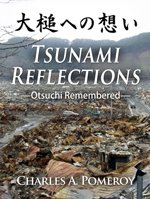
buyers, so my full attention was turned to the written word. I became a freelance translator and writer for local publications. Altogether I translated over a dozen books, ranging from the simpler "Japanese Toys" to the more complex "Chinese Eunuchs," after which I morphed from freelance translator into a correspondent specializing in coverage of Japan's healthcare industry until my retirement in 2004. As an author, my first book, "Traditional Crafts of Japan" (Weatherhill) was published in 1967.
This was followed in the mid-1990s by a major effort in which, as General Editor, I organized the knowledge of five colleagues to put together a history book, "Foreign Correspondents in Japan" (Tuttle). [Note: One photo, on page 49, of correspondents evacuating from Hungnam on Christmas Eve of 1950 includes Max Desfor of the Associated Press who later in Tokyo became my good friend, and it is ironic to recall that we may have roared overhead as Max was trying to get his camera to work in the freezing cold below.] That book was published in 1998. A more recent book, "Pharma Delegates" published by Trafford in 2013 also covered a half-century of history, but this time recounting the group activities of executives in the pharmaceutical industry.
My latest book, "Tsunami Reflections," published in late 2014, is about my wife's home town of Otsuchi, where we had built our retirement home, and Japan's horrific tsunami of 2011. That event not only destroyed the town and our retirement home, but also took the lives of family members. It was a difficult book to write. These publications as well as translated works are listed on my Goodreads author's page: https://www.goodreads.com/author/show/4022593.Charles_A_Pomeroy. After retiring from journalism in 2004 I had added a studio for making woodblock prints to our home in Otsuchi, but the tsunami of March 11, 2011, ended any ambition to create prints and I returned to writing. I am now working on a new book project, which will also include some memorable Navy experiences.
WHAT MILITARY ASSOCIATIONS ARE YOU A MEMBER OF, IF ANY? WHAT SPECIFIC BENEFITS DO YOU DERIVE FROM YOUR MEMBERSHIPS?
|

|
|
P2V-3 photo by Richard Pickering.
|
In addition to TWS, I am also a member of the Patron Six Blue Sharks Association: http://www.vp-6.org/. This group of veterans has a great site, with one of the best photos ever of a P2V-3 in flight, taken by Richard Pickering in 1950, which is shown here (VP-6's "BE" tail letters were painted over to prevent identification by the enemy). They organize annual reunions and provide relevant information pertaining to members, including obits, as well sea stories and a history of the squadron. Its major benefit has been to keep me in touch with former squadron mates as well as to provide information, and insights, on other eras of the squadron's history.
IN WHAT WAYS HAS SERVING IN THE MILITARY INFLUENCED THE WAY YOU HAVE APPROACHED YOUR LIFE AND YOUR CAREER?
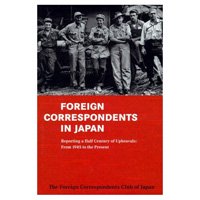
Service in the military instilled in me the basic values and self-discipline needed to achieve my later goals in life. Equally important, it taught me how to work with others to the benefit of all. Moreover, by exposing me to a broader world both in Europe and Asia, my Navy service also led to my study of the Japanese language and a career as a translator, journalist, and author working out of Tokyo. One example of the acquired knack of working with others manifested itself decades later when I was tasked with putting together the half-century history of the Foreign Correspondents Club of Japan, noted above. As General Editor, I organized five colleagues to write and publish "Foreign Correspondents in Japan" (Tuttle, 1998) within a very short time frame. It became one of my proudest achievements.
BASED ON YOUR OWN EXPERIENCES, WHAT ADVICE WOULD YOU GIVE TO THOSE WHO HAVE RECENTLY JOINED THE NAVY?
Listen and learn, for starters. Then know your place in the order of things and value your contribution, even if it seems inconsequential, but be alert to opportunities for advancement. The right attitude and desire to be among the best will allow you to grow and change over time, as I have seen in shipmates who boot-strapped from the enlisted ranks into commissioned officers.
IN WHAT WAYS HAS TOGETHERWESERVED.COM HELPED YOU REMEMBER YOUR MILITARY SERVICE AND THE FRIENDS YOU SERVED WITH.
|

|
|
TWS Anchors Away
|
One of TWS's most important functions is bringing former shipmates together again. As well, the monthly U.S. Navy Voices have kept me up to date on how the Navy has changed and how it hasn't. For me, it has also brought together diverse elements outside of naval aviation of which I had only limited knowledge. Initially I took advantage of the free membership for a number of years, a sort of lurker, but eventually concluded that it deserved my monetary support as a full member.